Embracing the Art of Battle in For Honor's melee combat
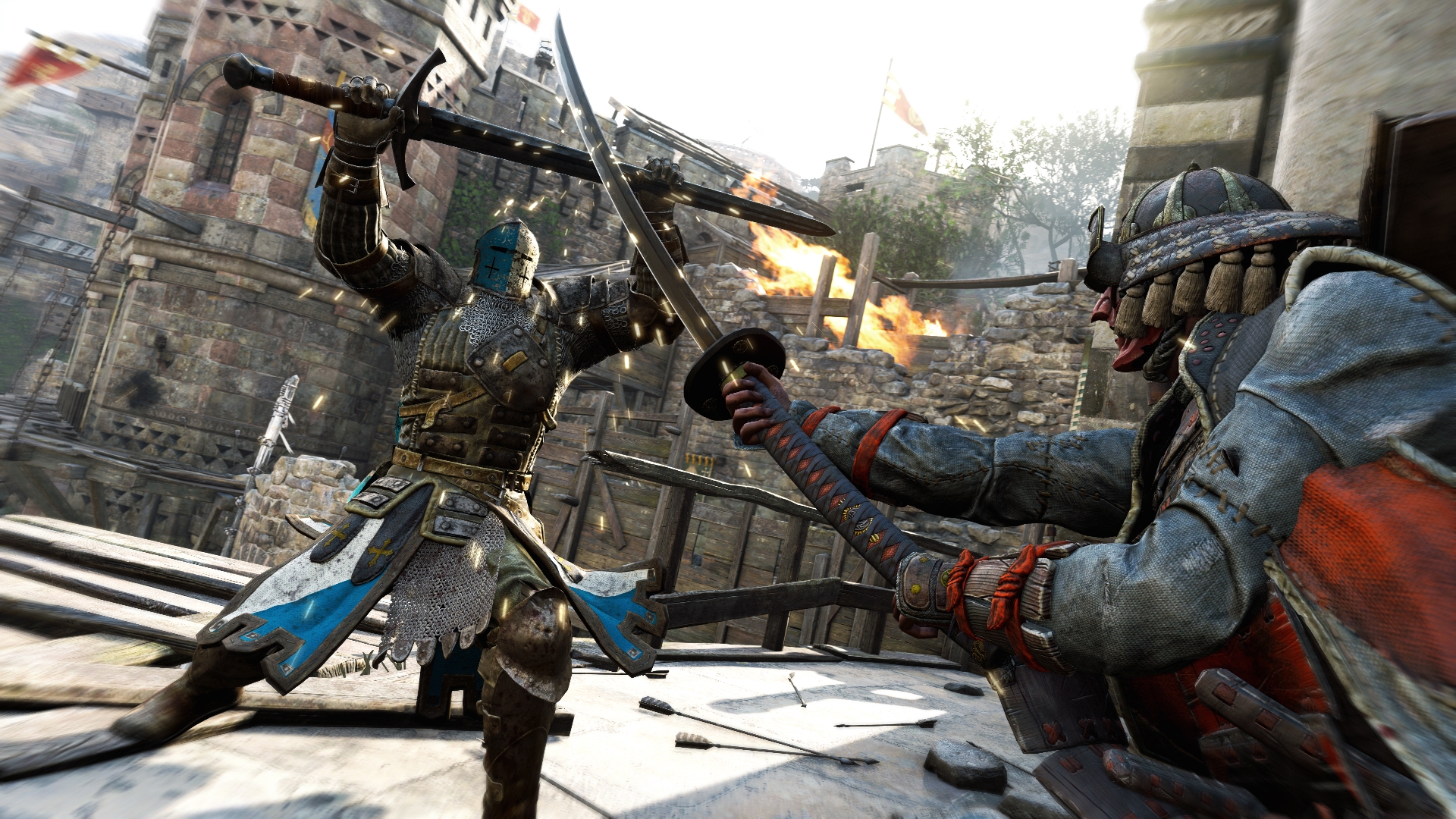
This really shouldn’t be my kind of game. Why? Well I don’t like beards (sorry, creative director Jason VandenBerghe), I never play competitive online multiplayer, and if you tried to sell me a game with the word “melee”, my eyes would probably glaze over. But I have fallen hard for For Honor. And I have fallen for the Art of Battle.
Perhaps it’s stretching the scope of this feature, dedicated to “the small things that make great games tick”, to write about a melee combat system. After all, that’s basically all there is to the game. Sure, it technically has a story: a ridiculous but light-hearted attempt to justify 1,000 years of non-stop war between its three factions of Vikings, Knights and Samurai. (And I have so many questions: How do they keep the population up when there’s so much death? Where are the noncombatants who grow the food and make the clothes and build the boats? Where are the children?) But you’re not playing For Honor for that. Everything else is set dressing for the Art of Battle.
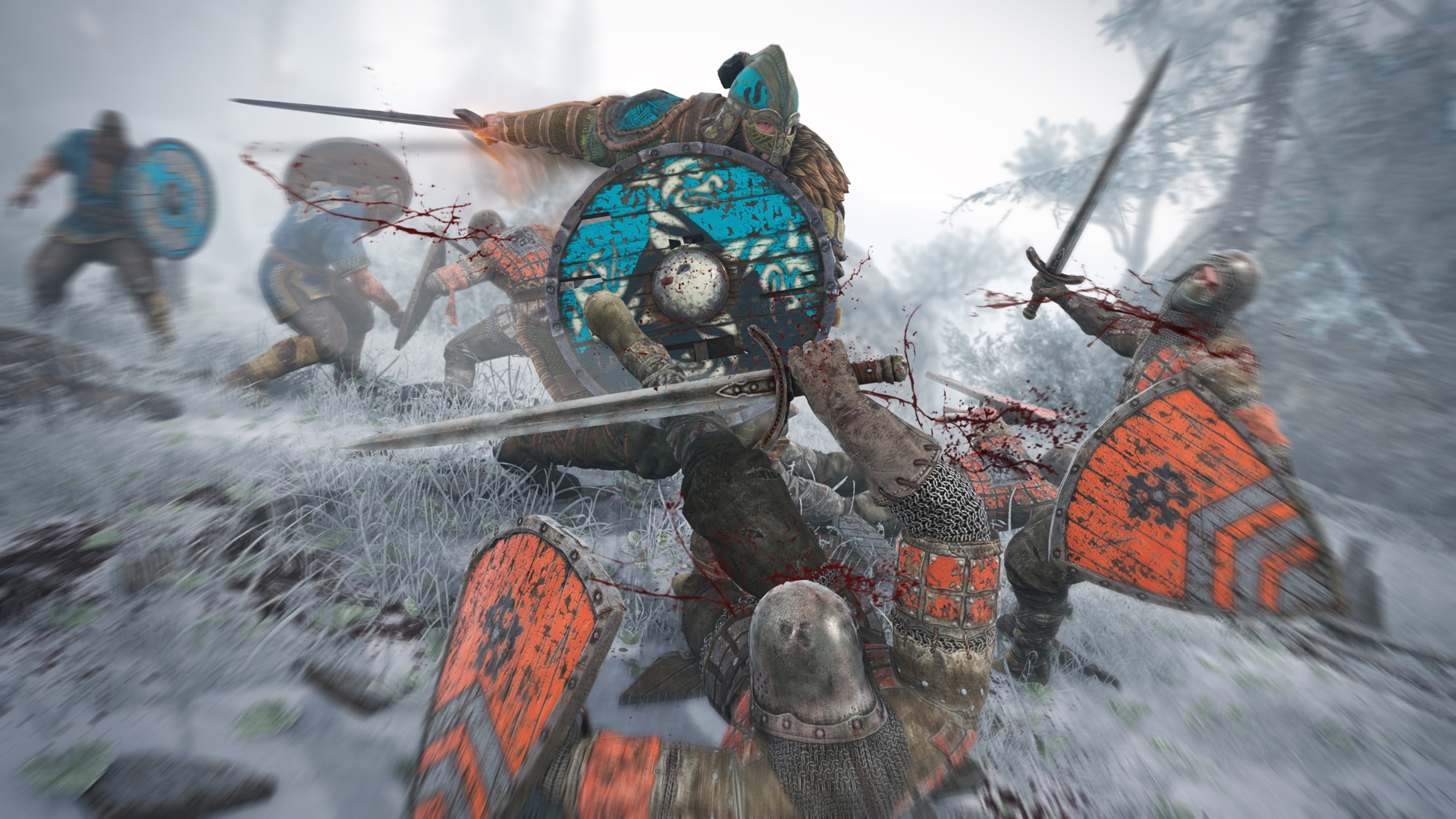
For Honor is a game that Ubisoft finally agreed to make after a decade of pleading from VandenBerghe, who just loves martial arts and medieval weaponry. But despite the high-definition blood and gore, For Honor isn’t really about killing. It’s about how it feels to move with a sword, a spear, two axes, or whatever else you can get your hands on.
Now, pressing buttons and waggling an analog stick is obviously very different from the very physical full-body control one needs for martial arts. But it’s a clever and intuitive abstraction. You lock on with the left trigger, which puts your current hero in guard mode, and then the right analog stick is your weapon. Whatever direction you push that stick – up, left or right – your weapon will follow. Sure, you’re only nudging a stick with your thumb, but it feels more one-to-one with what your arm would be doing than the controls in some other games.
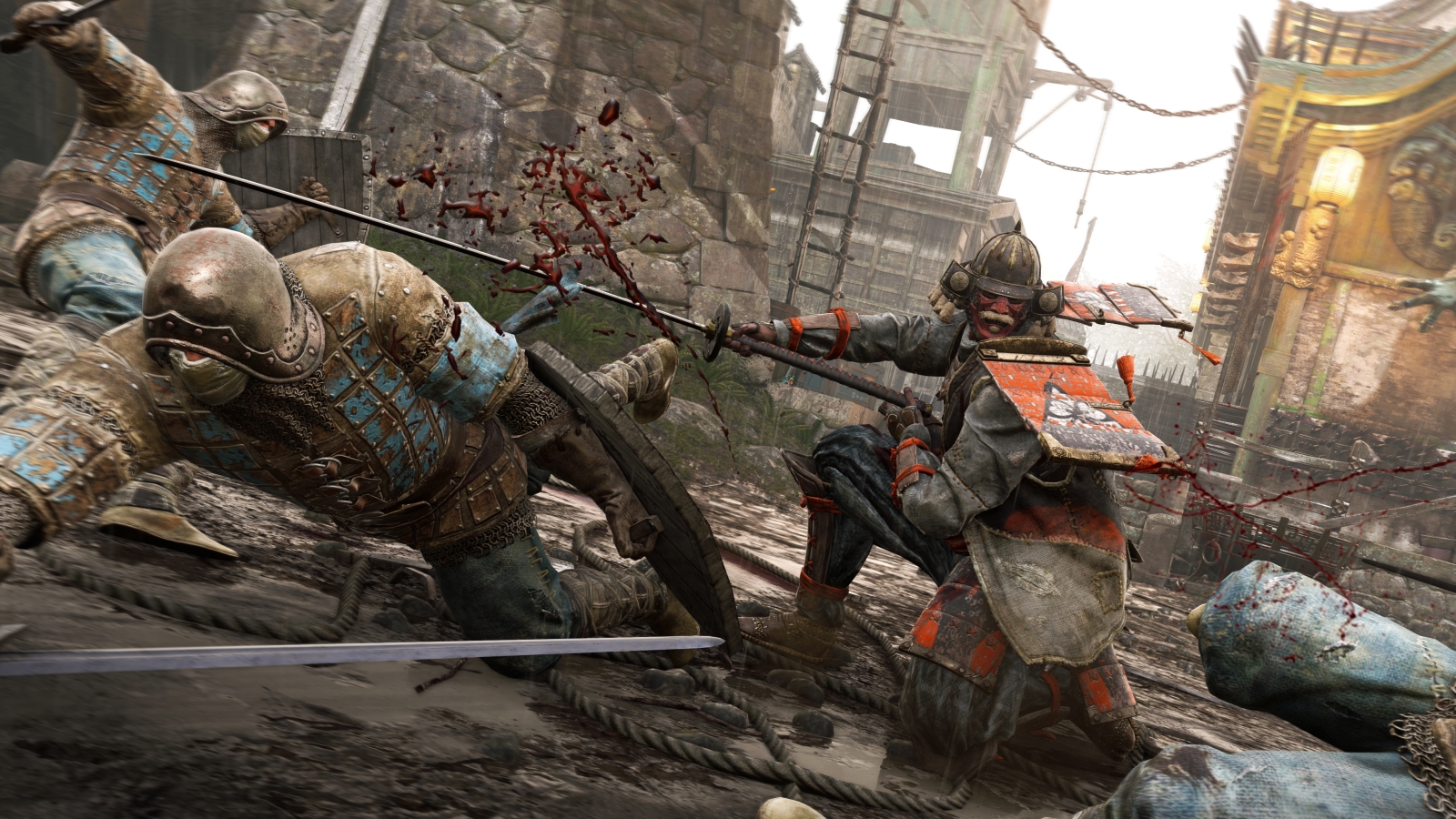
The clever part is that this three-directional motion is used to both attack and block. If you hold the stick to the left, your hero will block attacks on that side (even if someone other than your opponent comes at you from that direction). But press one of the attack buttons too – RB for a light attack, RT for something heavier – and you’ll attack that side of your target. With just these moves, the two of you constantly switch directions to find an opening.
An icon over your opponent shows you what direction they’re holding, and it flashes red if they attack. You can also read these signs in the way they handle their weapons, watching as they move them to above their shoulders or down to one side. I love the heavy but nimble way these huge fighters swing their weapons around, which is probably down to the motion capture from martial artists and stuntmen. They remind me of dancers.
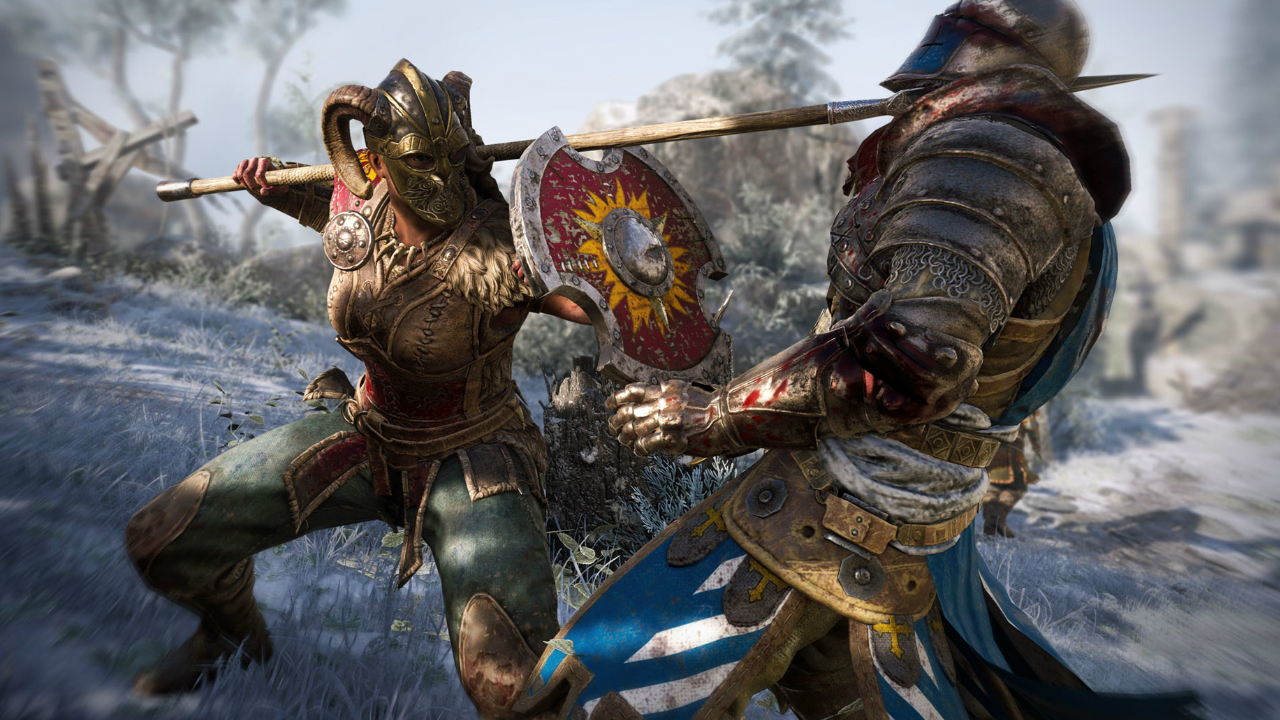
In fact, the basic idea of the combat makes me think of old arcade games, ones like Dance Dance Revolution where you have to move in limited directions in response to icons that appear at speed. Maybe that’s why I like For Honor so much more than the usual online multiplayer shooter games: it’s more about reaction time than hand-eye coordination.
Sign up to the GamesRadar+ Newsletter
Weekly digests, tales from the communities you love, and more
And with its intuitive controls, this is a fighting game for those who are usually intimidated by the genre. Like me. It’s easy to learn the basics, to develop an instinct for moving that analog stick to block and attack. And then you can pick your favourite hero and build on that with some of their unique combos. I currently favour the Valkyrie, and I love using her Spear Sweep to land a cocky opponent.
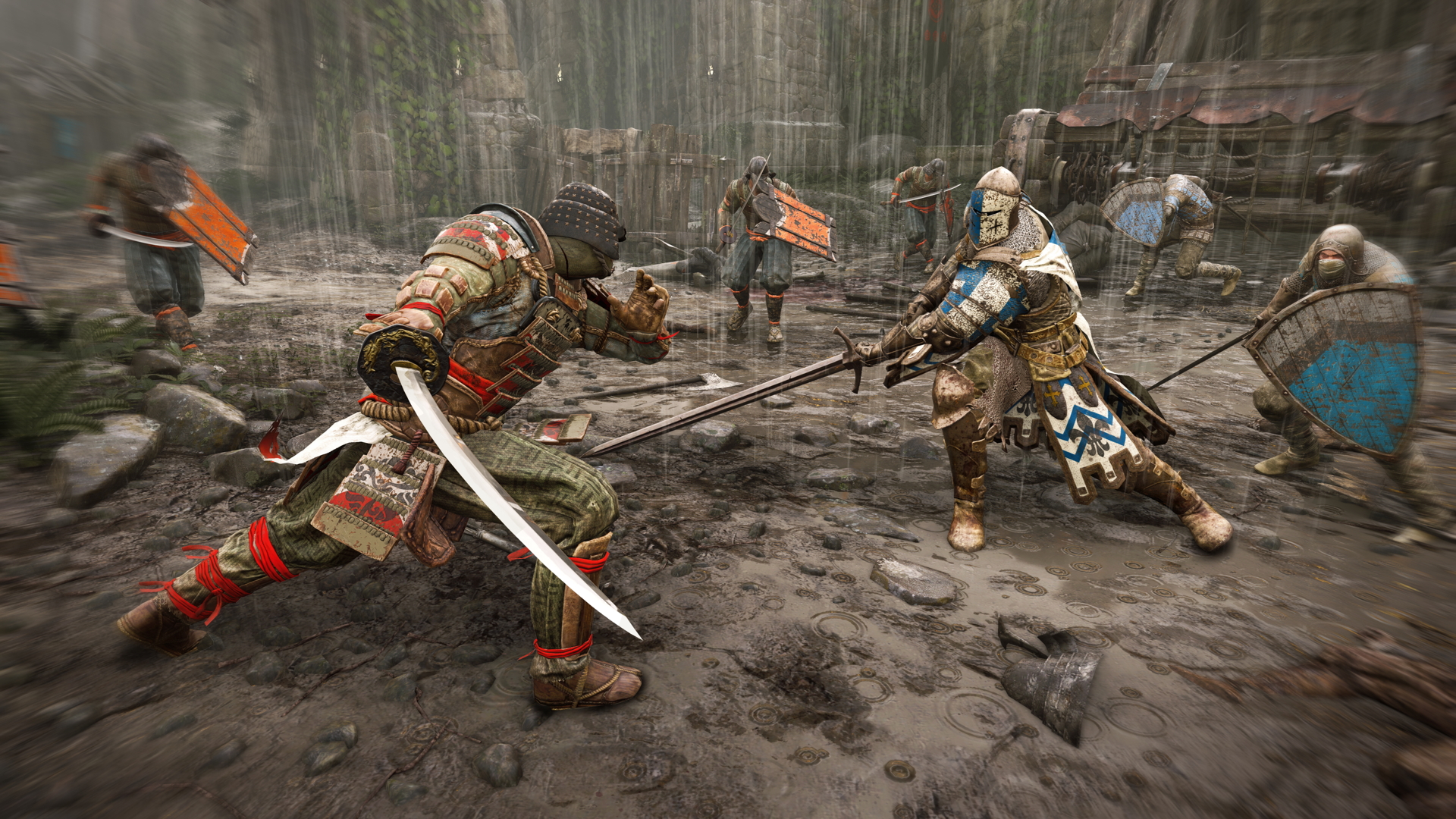
Don’t get me wrong, it’s overwhelming to try to remember all of my possible moves, especially in the heat of a fight. Sometimes I’ll find myself watching more experienced players chain together combos so seamlessly that I’m dead before I’ve had a chance to react. But this is the first fighting game and, if I’m being honest, the first game of any kind that’s tempted me to test my skills online. And that’s quite an achievement.
This article originally appeared in Xbox: The Official Magazine. For more great Xbox coverage, you can subscribe here.
Jordan Erica Webber is a talented freelance journalist with bylines on sites like GamesRadar+ and The Guardian, but there's a good chance you'll recognize her name from elsewhere. Jordan is the resident gaming expert on Channel 5's The Gadget Show, an arts and culture presenter for BBC Radio 4, and co-wrote an excellent book entitled 'Ten Things Video Games Can Teach Us (about life, philosophy and everything)'.



